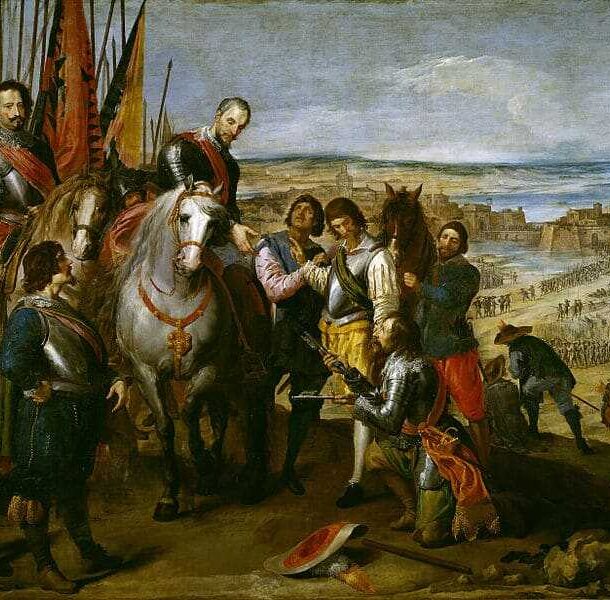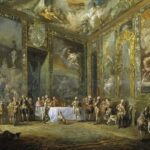
Paret’s work invites the viewer to a small rite that took place in the royal palace. The artist depicts the king as he is about to drink from the cup that his servant, bending his knee in submission, offers him. The sumptuous decoration includes tapestries with mythological themes such as The Sacrifice to Iphigenia, Mercury and Herse and Venus at the Forge of Vulcan. The scenes may have been chosen according to the ceremony taking place at the time or as an allusion to the king’s innermost thoughts. The depiction of a royal personage at table is not common. However, at the court of Charles III, the king’s meal was accompanied by a strict ceremonial that was described by many foreign travellers of the time. When this picture was painted, historical sources indicate that the antechamber was decorated with tapestries from the history of Joseph, not with mythological scenes. The ceiling, painted by Raphael Mengs with The Apotheosis of Hercules, had nothing to do with Paret’s imitation of Tiepolo’s style in the throne room.
Collection: Images
Project: 4. Family, daily life and social inequality in Europe., 5. Power and powers in the history of Europe: oligarchies, political participation and democracy.
Chronology: XVIII
Scope: Secondary Education, Baccalaureate, University
Resource type: Image
Format: Oil on canvas (50 x 64 cm)
Source: Museo Nacional del Prado (Madrid)
Language: Spanish
Date: 1775
Owner: Álvaro Romero González (Modernalia)
Identifier: P002422
Copyright: Museo del Prado (Madrid)
Abstract: Customs and daily life at the Court of Charles III
Image
Tags






